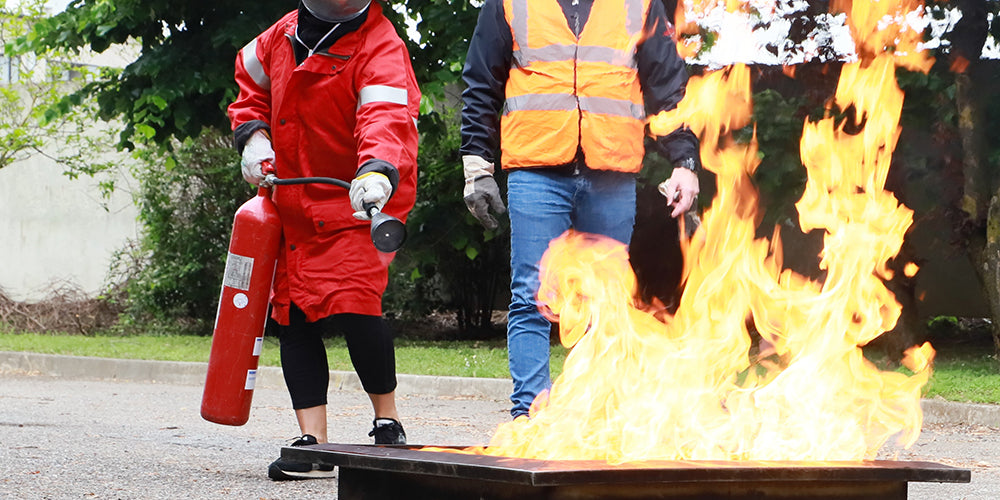You have no items in your shopping basket.
Health and safety awareness (social care) eLearning courses
Ensuring safety and well-being: The importance of effective health and safety awareness in UK social care settings
Rose Mabiza
12-04-2024
In social care, where vulnerable individuals depend on the support and assistance of caregivers, ensuring their safety and well-being is paramount. Practical health and safety awareness (social care) plays a crucial role, providing the framework to minimise risks, prevent accidents, and uphold standards of care excellence. In this blog, Rose Mabiza delves into the significance of health and safety awareness in UK social care settings, exploring key definitions, relevant legislation, and best practices to underscore its importance.
Key facts and statistics
- According to the Health and Safety Executive (HSE), the social care sector has one of the highest work-related injury and illness rates.
- In 2019/20, there were an estimated 69,000 non-fatal injuries to workers in the social care sector, highlighting the urgent need for effective health and safety measures (HSE).
- Research suggests that effective health and safety management can improve staff morale, reduce absenteeism, and improve the quality of care for service users (Health and Safety Executive).

Image by Rawpixel via Envato Elements

Image by FoToArtist_1 via Envato Elements
Key definitions
- Health and safety awareness (social care) - refers to understanding and implementing protocols, procedures, and practices to promote a safe and secure environment in social care settings.
- Risk assessment - is the process of identifying potential hazards, evaluating risks, and implementing measures to control or eliminate them.
- Safeguarding - Measures aimed at protecting vulnerable individuals from abuse, neglect, or harm.
Relevant legislation, regulations, and best practices
- Health and Safety at Work Act 1974 - The primary legislation governing health and safety in the UK, applicable to all workplaces, including social care settings.
- The Management of Health and Safety at Work Regulations 1999 - outlines specific requirements for risk assessment and management in the workplace.
- Health and Social Care Act 2008 (Regulated Activities) Regulations 2014 - These regulations set out fundamental standards of quality and safety for social care providers.
- Care Quality Commission (CQC) guidance - Provides detailed guidance on meeting regulatory requirements and best practices in social care.

Image by kckate16 via Envato Elements

Image by LightFieldStudios via Envato Elements
Mastering health and safety awareness in social care - Essential training for caregivers
- Ensuring safe environments - The first step in promoting health and safety awareness in social care settings is conducting comprehensive risk assessments. By identifying potential hazards, such as manual handling tasks or infection control practices, caregivers can implement appropriate measures to mitigate risks and safeguard themselves and service users. Regular reviews and updates of risk assessments are essential to adapt to changing circumstances and emerging risks.
- Infection control measures - Infection control is paramount in social care settings, where individuals may be more susceptible to infections. Implementing robust infection control measures, such as hand hygiene protocols, personal protective equipment (PPE) usage, and cleaning procedures, is crucial for preventing the spread of infections and maintaining a safe environment for all.
- Training and education - Equipping staff with the necessary knowledge and skills is critical to promoting health and safety awareness. Training programs should cover essential topics such as manual handling techniques, safeguarding practices, and emergency procedures. Utilising e-learning platforms like ComplyPlus LMS™ can provide convenient and accessible training options, allowing staff to stay updated on best practices at their own pace.
- Leadership and culture - Leadership is critical in fostering a safety culture within social care organisations. By setting clear expectations, providing resources, and leading by example, managers and leaders can instil a solid commitment to health and safety among staff. Encouraging open communication, listening to concerns, and promptly recognising and addressing safety issues are also vital components of creating a safety-focused culture.
Recommendations
- Regularly review and update health and safety policies and procedures to ensure alignment with legislation and best practices.
- Provide ongoing training and support for staff to enhance their health and safety awareness knowledge and skills.
- Foster a safety culture by promoting open communication, encouraging staff involvement, and recognising achievements in health and safety.

Image by FoToArtist_1 via Envato Elements

Image by coffeekai via Envato Elements
Conclusion
Practical health and safety awareness in social care settings is not just a legal requirement but a moral obligation to ensure the safety and well-being of vulnerable individuals. By implementing robust policies and procedures, providing comprehensive training, and fostering a culture of safety, social care organisations can create environments that prioritise the safety of staff and service users. Let us commit to promoting health and safety awareness, positively impacting the lives of those we care for.
Are you looking to enhance health and safety awareness in your social care organisation? Contact us today to explore our accredited training courses and discover how we can support your efforts to create safer environments for staff and service users.
In social care, where vulnerable individuals depend on the support and assistance of caregivers, ensuring their safety and well-being is paramount. Practical health and safety awareness (social care) plays a crucial role, providing the framework to minimise risks, prevent accidents, and uphold standards of care excellence. In this blog, Rose Mabiza delves into the significance of health and safety awareness in UK social care settings, exploring key definitions, relevant legislation, and best practices to underscore its importance.
Key facts and statistics

Image by Rawpixel via Envato Elements
- According to the Health and Safety Executive (HSE), the social care sector has one of the highest work-related injury and illness rates.
- In 2019/20, there were an estimated 69,000 non-fatal injuries to workers in the social care sector, highlighting the urgent need for effective health and safety measures (HSE).
- Research suggests that effective health and safety management can improve staff morale, reduce absenteeism, and improve the quality of care for service users (Health and Safety Executive).
Key definitions

Image by FoToArtist_1 via Envato Elements
- Health and safety awareness (social care) - refers to understanding and implementing protocols, procedures, and practices to promote a safe and secure environment in social care settings.
- Risk assessment - is the process of identifying potential hazards, evaluating risks, and implementing measures to control or eliminate them.
- Safeguarding - Measures aimed at protecting vulnerable individuals from abuse, neglect, or harm.
Relevant legislation, regulations, and best practices

Image by kckate16 via Envato Elements
- Health and Safety at Work Act 1974 - The primary legislation governing health and safety in the UK, applicable to all workplaces, including social care settings.
- The Management of Health and Safety at Work Regulations 1999 - outlines specific requirements for risk assessment and management in the workplace.
- Health and Social Care Act 2008 (Regulated Activities) Regulations 2014 - These regulations set out fundamental standards of quality and safety for social care providers.
- Care Quality Commission (CQC) guidance - Provides detailed guidance on meeting regulatory requirements and best practices in social care.
Mastering health and safety awareness in social care - Essential training for caregivers

Image by LightFieldStudios via Envato Elements
- Ensuring safe environments - The first step in promoting health and safety awareness in social care settings is conducting comprehensive risk assessments. By identifying potential hazards, such as manual handling tasks or infection control practices, caregivers can implement appropriate measures to mitigate risks and safeguard themselves and service users. Regular reviews and updates of risk assessments are essential to adapt to changing circumstances and emerging risks.
- Infection control measures - Infection control is paramount in social care settings, where individuals may be more susceptible to infections. Implementing robust infection control measures, such as hand hygiene protocols, personal protective equipment (PPE) usage, and cleaning procedures, is crucial for preventing the spread of infections and maintaining a safe environment for all.
- Training and education - Equipping staff with the necessary knowledge and skills is critical to promoting health and safety awareness. Training programs should cover essential topics such as manual handling techniques, safeguarding practices, and emergency procedures. Utilising e-learning platforms like ComplyPlus LMS™ can provide convenient and accessible training options, allowing staff to stay updated on best practices at their own pace.
- Leadership and culture - Leadership is critical in fostering a safety culture within social care organisations. By setting clear expectations, providing resources, and leading by example, managers and leaders can instil a solid commitment to health and safety among staff. Encouraging open communication, listening to concerns, and promptly recognising and addressing safety issues are also vital components of creating a safety-focused culture.
Recommendations

Image by FoToArtist_1 via Envato Elements
- Regularly review and update health and safety policies and procedures to ensure alignment with legislation and best practices.
- Provide ongoing training and support for staff to enhance their health and safety awareness knowledge and skills.
- Foster a safety culture by promoting open communication, encouraging staff involvement, and recognising achievements in health and safety.
Conclusion

Image by coffeekai via Envato Elements
Practical health and safety awareness in social care settings is not just a legal requirement but a moral obligation to ensure the safety and well-being of vulnerable individuals. By implementing robust policies and procedures, providing comprehensive training, and fostering a culture of safety, social care organisations can create environments that prioritise the safety of staff and service users. Let us commit to promoting health and safety awareness, positively impacting the lives of those we care for.
Are you looking to enhance health and safety awareness in your social care organisation? Contact us today to explore our accredited training courses and discover how we can support your efforts to create safer environments for staff and service users.
About the author
Dr Richard Dune

With over 20 years of experience, Richard blends a rich background in NHS, the private sector, academia, and research settings. His forte lies in clinical R&D, advancing healthcare tech, workforce development and governance. His leadership ensures regulatory compliance and innovation align seamlessly.
Related blog articles
View allContact us
Complete the form below to start your ComplyPlus trial and transform your regulatory compliance solutions.







